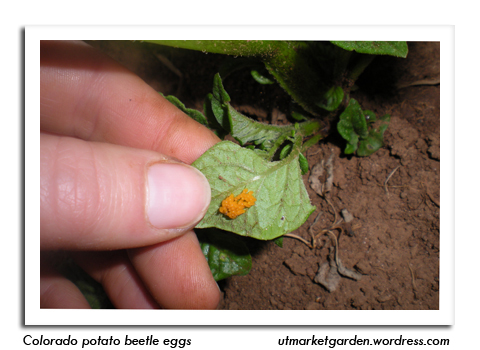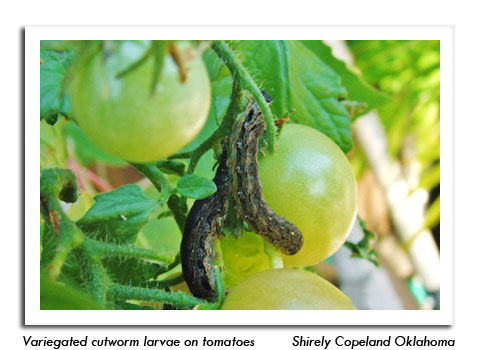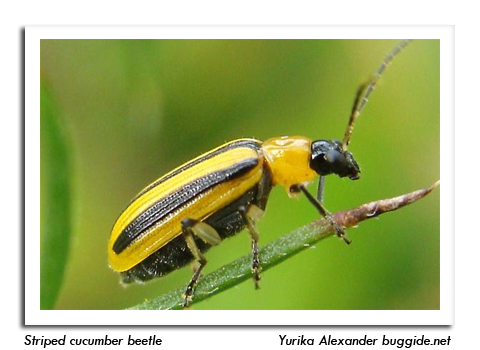
 |
|
|
Vegetables
Volume 59 Number 7 Date 06/12/2014 COLORADO POTATO BEETLE - Oviposition has started across southern and central Wisconsin. The bright orange-yellow eggs deposited by the females should be apparent on the undersides of leaves in the week ahead. At normal June temperatures, the eggs hatch in 4-8 days and larvae mature to the third instar stage in another 5-9 days. These early individuals are usually less destructive than the summer generation. Treatment is justifiable for pre-flowering, 6-8 inch potatoes when defoliation of exceeds 20-30%. VARIEGATED CUTWORM - Larvae were found in counts of 2-4 per 100 plants in two Sauk County cornfields. This sporadic pest, which appeared in record numbers in field, forage and vegetable crops in 2012, is one of the most damaging cutworms on beans, potato and tomato. The larvae noted near Reedsburg were approximately one-inch long on June 10. STRIPED CUCUMBER BEETLE - Adults are expected to become increasingly abundant by late June. Growers of cucurbits should begin inspecting plants for these yellow and black striped bacterial wilt vectors. The beetles infect cucumbers, melons and squash through feces or contaminated mouthparts. The first symptom of bacterial wilt on cucumber and melon is a distinct flagging of lateral and individual leaves. Early beetle control may be justified in home gardens and larger commercial muskmelon or cucumber plantings for populations of 4-5 beetles per 50 plants. -- Krista Hamilton, DATCP Entomologist 



|
|
|